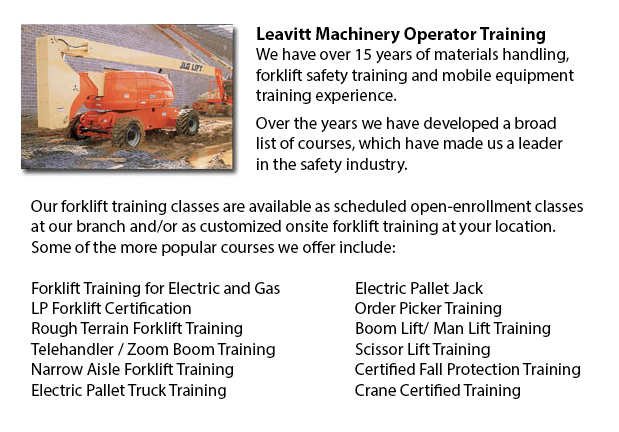
Aerial Lift Safety Training Markham - There are about 26 to 30 construction deaths in North America attributed to the use of aerial lifts. Nearly all of the individuals killed are craftsmen like for instance painters, electrical workers, laborers, carpenters or ironworkers. The majority of the deaths are caused by tip-overs, electrocutions and falls. The greatest danger is from boom-supported lifts, such as cherry pickers and bucket trucks. Most fatalities are related to this particular type of lift, with the rest involving scissor lifts. Other risks include being struck by falling objects, being thrown out of a bucket, and being caught between the guardrail or lift bucket and a thing, like a joist or steel beam.
To operate an aerial lift safely, perform an inspection on the following things prior to using the device: operating and emergency controls, safety devices (like for example, outriggers and guardrails), personal fall protection gear, and tires and wheels. Look for possible leaks in the air, fuel-system, hydraulic fluid. Check the device for loose or missing components.
The areas where worker would utilize the aerial device should be checked thoroughly for potential hazards, like holes, bumps, debris and drop-offs. Overhead powerlines have to be monitored and avoided. It is suggested that aerial lift devices be used on level, stable surfaces. Do not work on steep slopes which exceed slope limitations which the manufacturer specified. Even on a slope that is level, outriggers, brakes and wheel chocks should be set.
Employers are required to provide aerial lift operators and maintenance mechanics with the right instruction manuals. Mechanics and operators must be trained by a qualified individual experienced with the relevant kind of aerial lift.
Aerial Lift Safety Tips:
o Before operating, close lift platform chains and doors.
o Climbing on and leaning over guardrails is prohibited. Stand on the floor of the bucket or platform.
o Use the provided manufacturer's load-capacity restrictions.
o When working near traffic, use correct work-zone warnings, such as signs and cones.
Electrocutions are preventable if safety procedures are followed. Stay well away from power lines - at least 10 feet. Qualified electrical workers should insulate and/or de-energize power lines. Workers must utilize personal protective equipment and tools, such as a bucket that is insulated. Then again, a bucket which is insulated does not protect from electrocution if, for example, the person working touches another wire providing a path to the ground.
Falls are preventable if the person working remains secure within guardrails or within the bucket by using a positioning device or a full-body harness. If there is an anchorage inside the bucket, a positioning belt along with a short lanyard is acceptable.
Tip-overs are preventable by following the manufacturer's directions. Unless the manufacturer specifies otherwise, never drive whilst the lift platform is elevated. Follow the horizontal and vertical reach limitations of the device, and never go beyond the specified load-capacity.
-
Crane / Overhead Crane / Self-Erect Crane / Truck Mounted Crane / Hydraulic Cranes Training in Markham
Bridge cranes or overhead cranes are a kind of industrial material handling crane making use of a hook and line apparatus that runs on a horizontal beam running along two widely separated rails. Many overhead cranes could be seen inside a long factor... More -
Manlift Ticket Markham
Manlift Ticket Markham - The Manlifts and Elevated Platforms program provides training on the regulations, rules and correct application of safe operating procedures and work practices involved in everyday activities for individuals who work with thi... More -
Aerial Lift Train the Trainer Markham
Aerial Lift Train the Trainer Markham - The Aerial Lifts Train the Trainer Certification Program will teach trainers how to effectively train operators in safe industrial mobile equipment operation. Trainers are given in-depth instruction on aerial l... More -
Loader Operator Training Markham
Loader Operator Training Markham - Loader Operator Training - Within North America, lift truck operator training is required to be able to prevent workplace injuries and accidents. Certain forklift training would be provided to be able to offer forkl... More -
Aerial Boom Lift Ticket Markham
Aerial Boom Lift Ticket Markham - Aerial lift trucks can be used to accomplish many unique duties done in hard to reach aerial spaces. A few of the duties associated with this style of jack include performing daily repair on buildings with high ceili... More -
Boom Lift Operator Training Markham
Boom Lift Operator Training Markham - The cherry picker work platform is a type of work platform, that will usually have a bucket or platform at the hydraulic lifting system's end. The machine is likewise called a boom lift, man lift, hydraladder or... More -
Boom Lift License Markham
Boom Lift License Markham - Just fully qualified individuals must operate an aerial boom lift. Qualification can be obtained through a combination of classroom sessions and practical training with the particular kind of aerial lift that will be used... More -
Telehandler Training Courses Markham
Telehandler Training Courses Markham - The employer has the responsibility to make certain that their workers are trained to work proficiently with telehandler machines. The staff have to be assessed for their skill to utilize the equipment. If defic... More

Forklift Training Markham
TOLL FREE: 1-888-254-6157
Markham, Ontario
forklifttrainingmarkham.com
Email Us
About Us


